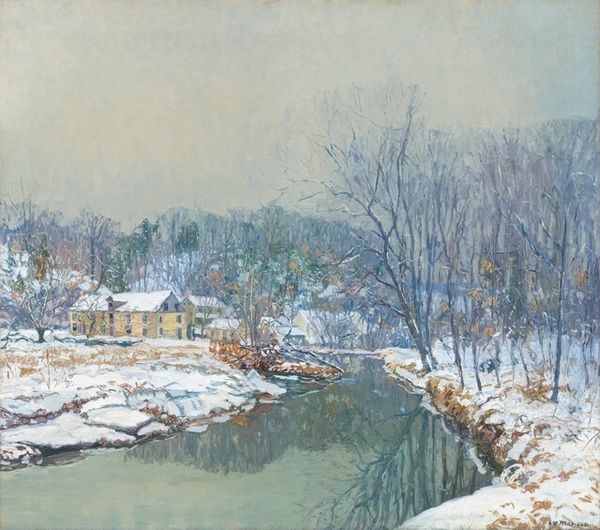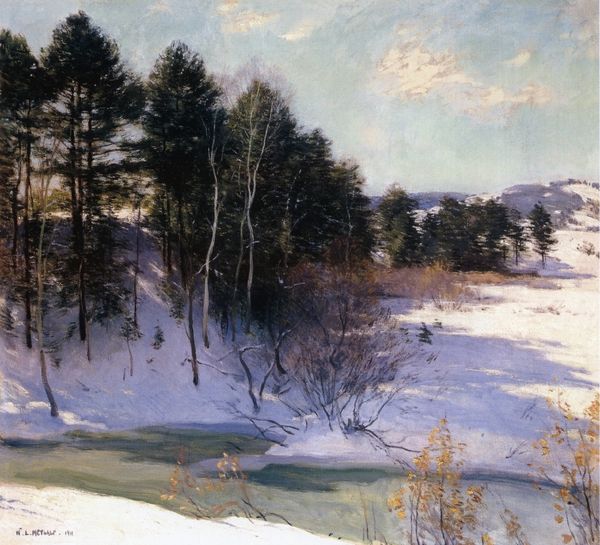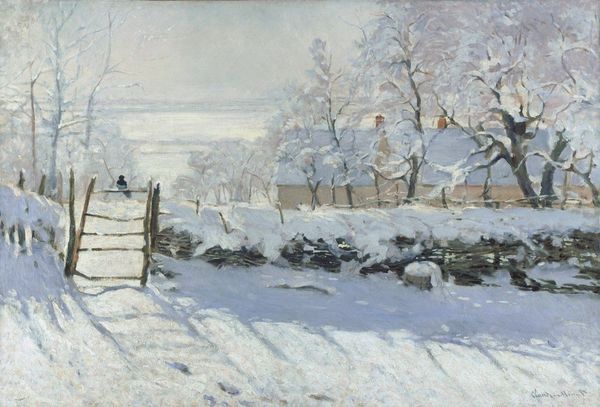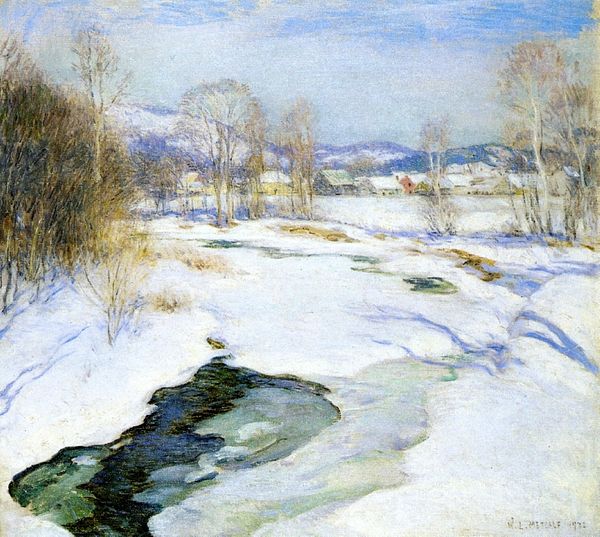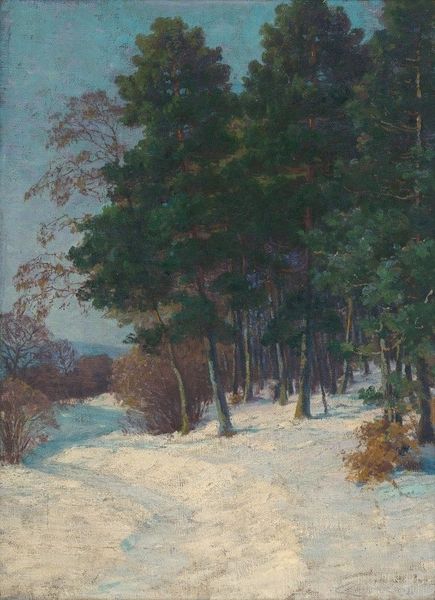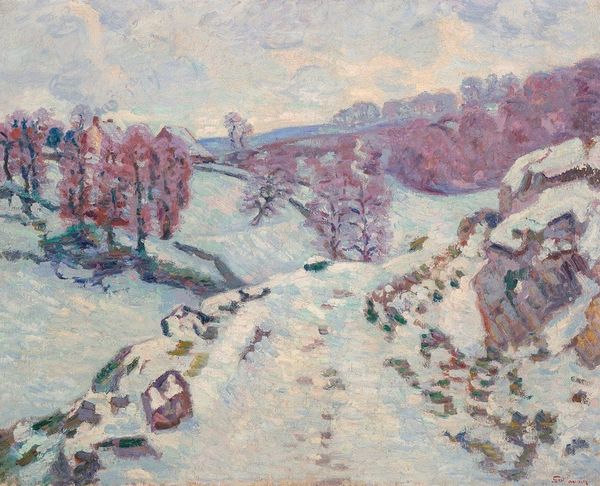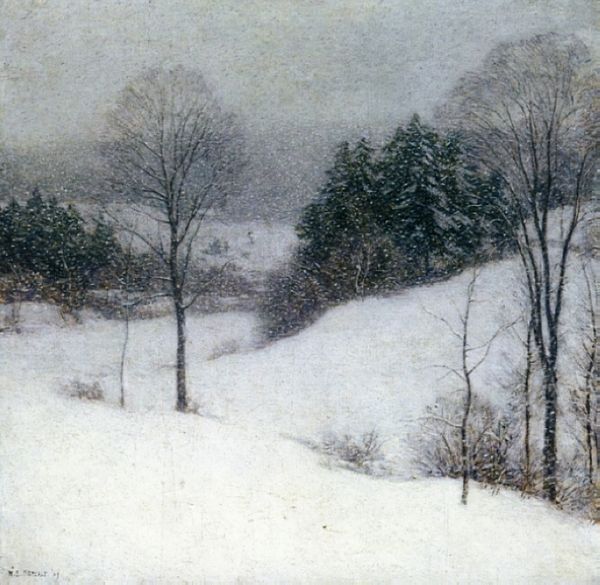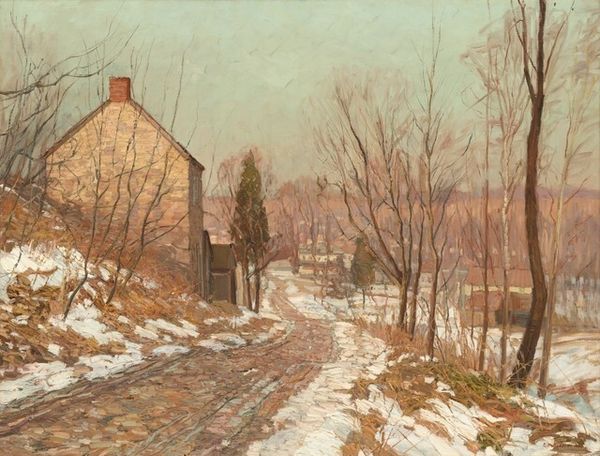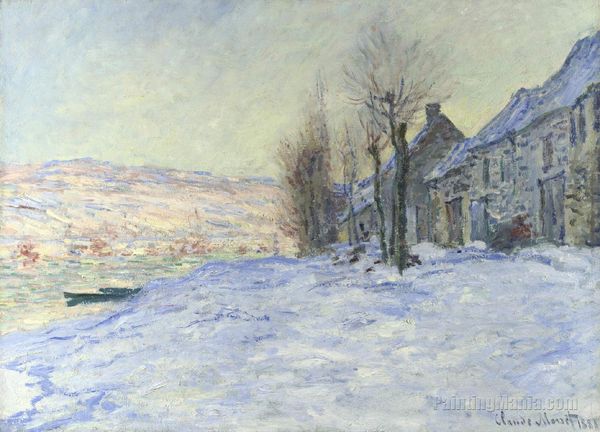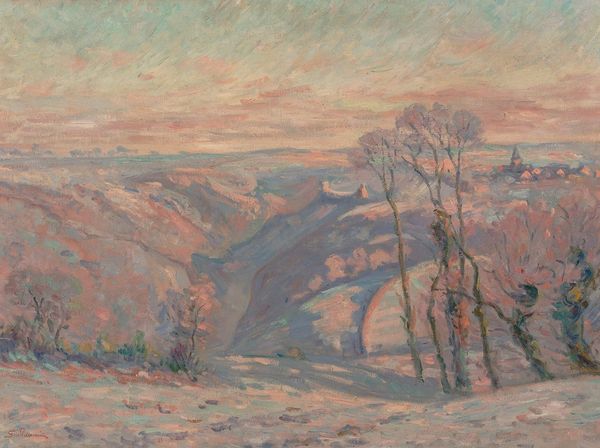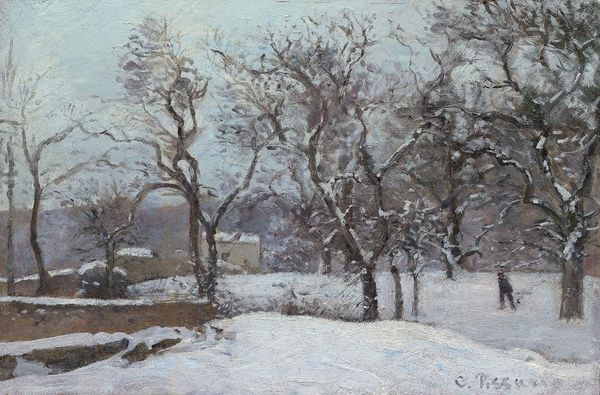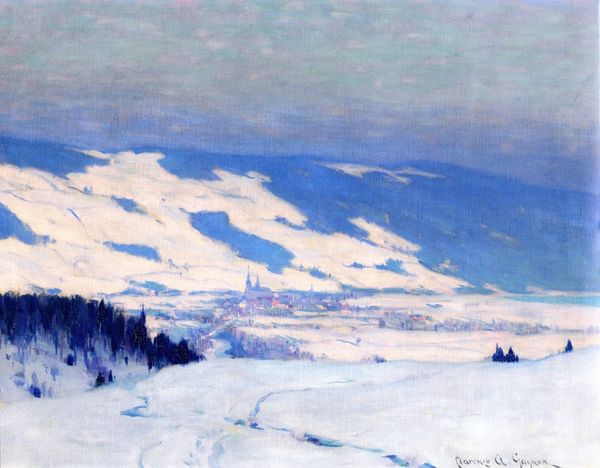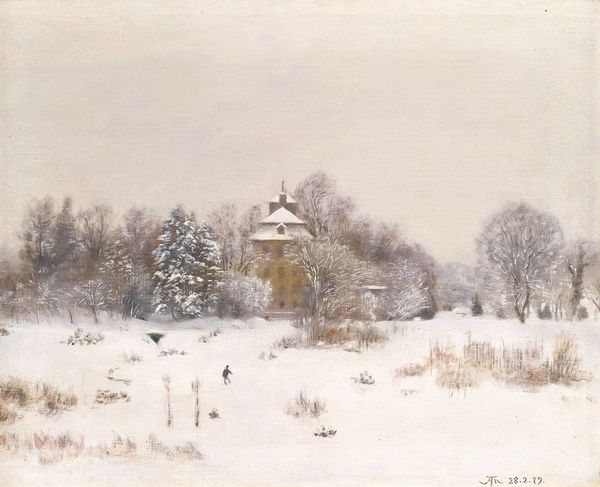
Dimensions: overall: 96.52 × 127.64 cm (38 × 50 1/4 in.) framed: 106.86 × 138.75 × 5.08 cm (42 1/16 × 54 5/8 × 2 in.)
Copyright: National Gallery of Art: CC0 1.0
Editor: This is Edward Willis Redfield’s “Overlooking the Valley,” painted around 1919 using oil paints in the open air. The blanket of snow and muted colors give it such a peaceful, almost melancholic feel. How do you interpret this work? Curator: It's fascinating how Redfield captures the quiet of a snow-covered landscape, especially considering the historical context. Painted just after World War I, the painting evokes a sense of yearning for normalcy. This rural scene provides a stark contrast to the industrialization and wartime devastation happening globally. Do you think this imagery served as an escape for its viewers? Editor: Absolutely, it does seem like a deliberate retreat to simpler times. Was this a common sentiment reflected in art of the period? Curator: Definitely. We see similar themes in the works of other American Impressionists. Redfield, however, brings a unique focus to the everyday, elevating the mundane to a subject of beauty and contemplation. His focus on the readily accessible scenes resonates with the rise of a middle class finding value in homegrown scenes. Editor: It’s interesting to consider that this “escape” also carries its own social implications. So it isn’t necessarily disconnected from socio-political forces. Curator: Precisely. Think about the choices Redfield makes – this specific valley, the vantage point. These choices speak to ideas about the idealized American landscape. Redfield presents a particular vision of rural life, one that excludes the complexities and hardships faced by many. Art doesn't exist in a vacuum; even landscapes carry political undertones. Editor: That really changes how I see the painting! I originally just appreciated its aesthetic qualities. Thank you for offering that perspective! Curator: And thank you for pointing out the initial emotional impact; that direct response is so vital. Looking at art through both lenses enriches the experience.
Comments
No comments
Be the first to comment and join the conversation on the ultimate creative platform.
